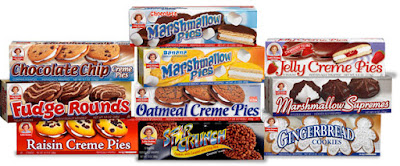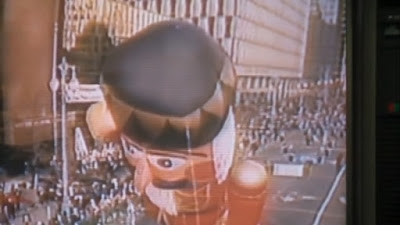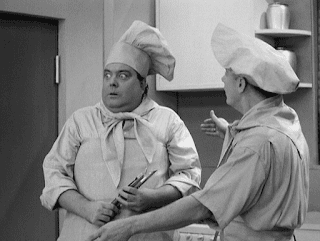During the mid-90s, it was hard to find anything as popular as pro wrestling. I know for myself nothing topped it. I have always associated summertime with wrestling because I had so much more time to concentrate on it without that pesky school getting in the way.
During the school year, I had hockey practice and homework or all sorts of other things to distract my attention away from wrestling. But during the summertime, especially in 1996, 97, and 98... it was laser-focused on wrestling.
Since it was summer, I'd stay up late watching all sorts of wrestling, including the late-night replays of the Monday evening shows I'd already watched. If wrestling wasn't on, chances were that I was playing wrestling video games on N64, like WCW's World Tour or Revenge.
During the day, I'd be with friends, creating storylines and participating in our backyard wrestling shows. If we weren't together, there was a good chance we would be online using AIM (AOL Instant Messenger) to discuss wrestling and other things.
Although since we had Prodigy during the Monday Night Wars, it was likely it wasn't until later in 2000 or 2001 when we got DSL instead of dial-up, ditched Prodigy, and I could finally use AIM.
During the summer in the mid-90s, my brother and I would spend the days alone at home when Mom and Dad went to work. Granny and Gramps were next door, but we spent most of our time watching TV or playing on the computer. I spent more time than nearly anything browsing Prodigy's Wrestling BBs, catching up on the latest rumors and storylines, or participating in several "e-fed" fantasy wrestling shows.
For those who didn't have Prodigy or are too young to remember, "BBs" stood for "Bulletin Board," a Prodigy-only precursor to online Message Boards.
Some kids today won't even know what a message board is since everything in their lifetime is just a social media "feed." It was sort of like Reddit, but better.
By the way, if any of you remember Prodigy's E-Feds, I ran the American Wrestling Federation (AWF) around 1998. I wish there was an archive of that stuff, but I'm pretty sure it died with Prodigy. We had a good run of a year's worth of shows with a very high participation rate, but I made the tough decision to close AWF shortly after entering high school in 1999. I had started playing Varsity ice hockey and was pretty busy. Wrestling had begun to cool off in popularity anyway since WWF had clearly won the war by then, and participation in the AWF had dried up as Prodigy slowly faded into irrelevancy as America Online became the clear winner in the ISP "war." As the company slowly died, it began closing down the old BBs, and that was that.
It's a small world, and you never know, so I thought I'd throw that out there and see if anyone remembers or participated.
During the early part of the "war," WCW was on top of the world. After years of being a small southern regional company, then known as Jim Crockett Promotions (JCP), WCW became a nearly nationwide company and the lone challenger to Vince McMahon's globally recognized WWF. Billionaire Ted Turner purchased JCP in 1988, saving it from bankruptcy, and changed its name to World Championship Wrestling.
Over the next few years, the company underwent a series of changes to make the company profitable, all without much success. Eventually, third-string television announcer Eric Bischoff was named Executive Vice President, and he immediately began making some major changes that would turn the company into a global empire. One of those changes was to go live on TNT on Monday nights, directly challenging the WWF's Monday Night Raw.
Beginning in 1996, Bischoff's new show, WCW Monday Nitro, would be the top wrestling show in the country. It beat McMahon's Monday Night RAW in the television ratings for 83 straight weeks.
At its peak in the 90s, 11 million people watched pro wrestling on Monday nights between TNT and the USA Network. Today, in 2024, WWE's Monday Night RAW averages about 1.5 million viewers on USA. AEW's flagship show, Wednesday Dynamite, averages about 750,000 viewers on TNT.
Yes, there are a lot of excuses about why television ratings as a whole are down in 2024 compared to 1998, but despite WWE's massive global scale, wrestling isn't the "must-watch" pop culture phenomenon it once was.
Although, we're here to discuss wrestling in 1998, not 2024!
Every August, WCW hosted one of their monthly Pay Per Views live from the renowned motorcycle rally in Sturgis, South Dakota. The event, called "Hog Wild," and later "Road Wild," was often a mess, with thousands of drunk rallygoers given free tickets to sit ringside revving the engines on their Harley Davidson. People frequently use these shows to knock Eric Bischoff and WCW, but I loved these August events and thought it was a great concept in a venue different from traditional arenas.
Sure, maybe it was just an excuse for the motorcycle-loving Bischoff to hang out with other motorcycle guys. Still, we did get those awesome video packages of Sting, Lex Luger, the Steiner Brothers, and others riding their "hogs" up to the Black Hills from Atlanta every year.
As a kid, I ate that sort of stuff up. I didn't care that the fans weren't excited about the matches and were only there for the free drinks and party atmosphere. I have always loved a well-themed Pay-Per-View, and I thought this was just fun.
My parents would always laugh at the thought of spending $40 so I could order a wrestling PPV during the rest of the year, so I lived through updates from friends on the internet who were watching the show. When it came to Road Wild, my parents never had to say no because we were always in Maine on our summer vacation when it happened, so I never asked. Up there, we were lucky to get two channels with tin foil wrapped around the TV's rabbit ears (look it up, kids!)
I always felt like I really missed out on these August shows. Back then, they used these summertime events as the climax of a month or two of building up to their main storyline, which usually involved Hulk Hogan and a celebrity, specifically Dennis Rodman, Karl Malone, and Jay Leno.
I didn't (and still don't) give a darn about basketball, but the storylines leading up to the matches involving some of the NBA's hottest stars were intriguing. The story that really caught my interest, in a way wrestling storylines often don't, was the one involving comedian Jay Leno. When the nWo crashed the set of "The Tonight Show," I thought it was one of the more interesting things I'd ever seen in wrestling or on late-night television.
In a bit of good timing, that same year, in 8th grade, my good friend and I had gotten into watching late-night talk shows. Chris loved Leno, but my brother loved Letterman, and we'd often stay up late on Fridays to see the Top Ten list. We'd stay up every night during the summertime to watch the monologue and Top 10 list before flipping the channel to something else when the guest interviews began.
Every morning in homeroom, Chris and I would discuss the monologue and argue over which was funnier. However, that summer, even I had to admit that I became a fan of The Tonight Show when Eric Bischoff and Hulk Hogan began appearing on Leno's show.
By the summer of 1998, WCW had lost their 83-week winning streak and was looking to regain it.
WWF was known for effectively using celebrities, going back to the first Wrestlemania. When boxer Mike Tyson got involved in the WWF at Wrestlemania 14 in March 1998, he brought the promotion to new heights. His presence generated significant media attention and fan interest, leading to several wins in the ratings war.
WCW tried to replicate their rival's success, leading to exciting (for me) celebrity appearances at major pay-per-view events, such as NBA stars Karl Malone and Dennis Rodman. Despite their limited wrestling skills, the two were featured in high-profile storylines and matches.
Later in the 90s, WCW would even resort to putting the World Heavyweight Championship on actor David Arquette in an attempt to gain new viewers, but the company was too far gone at that point.
On an episode of Eric Bischoff's podcast, appropriately titled "83 Weeks," from 2020, Eric explained that late-night king Jay Leno's involvement was mostly Leno's idea. Bischoff explained that he received a phone call from Gary Considine, the executive producer at NBC and Leno's Tonight Show. Gary said Jay wanted to "get involved" and "do something in wrestling."
Shocked, Bischoff immediately flew to meet with Leno and was impressed by his kind personality and genuine interest in working with the wrestling promotion. When Eric asked if he'd be willing to actually wrestle, Bischoff claimed that Jay enthusiastically responded with a resounding yes.
That private meeting took place on July 1st, 1998, giving them just about 30 days to devise an exciting story to drive viewer interest for the August 8th Pay-Per-View in Sturgis.
Bischoff devised a plan to have Hulk Hogan take over The Tonight Show. The Hulkster and "Easy E" (Bischoff) would take over the set, throwing Leno and bandleader Kevin Eubanks out of the studio. Bischoff knew they had to make it look natural and believable, where there was no comedy or laughter. Blending storyline with realism worked exceptionally well for WCW with the nWo storyline, so Bischoff wanted something the regular viewer of The Tonight Show would never expect.
WCW and The Tonight Show quickly worked together to set the storyline in motion.
On an episode of Monday Nitro, Bischoff began insulting Leno. The clip from Nitro was then played the next night on the July 28, 1998, episode of "The Tonight Show." Leno then claimed to have Hogan as a guest but instead introduced a midget dressed up as the famous wrestler.
The following night, Leno repeated the gag with the same fake Hogan, but this time, the real Hogan and Bischoff came onto the Tonight Show stage and physically tossed Leno and Eubanks from the studio.
After the WCW intruders enjoyed several minutes pretending to host their own late-night show in front of a shocked audience, Leno returned with security to eject Hogan and Bischoff. He also brought a surprise with him... Diamond Dallas Page!
Page began to pummel Hogan before security escorted Hogan and Bischoff from the stage. When they were gone, Page begged Leno to join him in a tag team match against the team of Hogan and Bischoff at the "Road Wild" Pay-Per-View, and Leno accepted.
The aforementioned "Tonight Show" segment can be watched in the video below. It's not the greatest quality, but you'll still get to relive that incredible moment!
On his podcast, Bischoff recalled that before The Tonight Show began, he had instructed Leno to play the segment straight, telling the comic that "the minute you crack a smile, the minute you show your teeth, it'll ruin everything." Leno eagerly agreed and followed directions well, making everyone feel they had "pulled it off," according to Bischoff.
Despite the successful efforts to use Leno's show to build interest in Road Wild 1998, the match itself was not what Dave Meltzer would call a "5-Star Classic." For 14-year-old me in 1998, though, I couldn't care less. It was everything it was supposed to be and more.
Of course, as I mentioned before, I didn't get to see it live, but when I finally did, I was blown away. There was no social media to ruin it for me beforehand, and when I was finally able to see the match in its entirety, I didn't have a preconceived notion from the Dave Meltzer's of the world who hated it.
Eubanks accompanied Leno and Page to the ring, while Hogan and Bischoff were joined at ringside by Miss Elizabeth and The Disciple, whom you better know as Brutus "the Barber" Beefcake. Bischoff and Leno would wear a t-shirt and sweatpants, while their muscular partners wore traditional wrestling trunks.
Most of the match was between Hogan and Page, with minor involvement from the others. At one point, Bischoff tagged in to double-team Page with Hogan, only to exit the ring before Leno could catch up to them. Leno then began taking turns with Page twisting Hogan's arm in one of the most basic wrestling holds ever.
It may have been a handful of simple wrestling moves like a wristlock and a few weak-looking elbows, but Leno did indeed get physical. When Leno finally got ahold of Bischoff, the late-night host got in an eye poke and a shot below the belt before repeatedly ramming Eric's head into the turnbuckle.
Ultimately, Leno would pin Bischoff to win the match, but Hogan and the Disciple attacked the winners until Goldberg ran in from backstage to stop the attack. After, Goldberg, Leno, and Page celebrated in the ring together.
Thanks to WWE, you can view the only free video available online below. To see the entire match, you'll need to subscribe to Peacock and head to the WWE section.
Leno's involvement was beneficial for WCW despite criticism that Leno's audience was not the typical wrestling audience. The goal of mainstream coverage for Road Wild was achieved, although not as successfully as they had hoped. The event only generated 360,000 buys and is often compared in the press to WCW's tentpole event, Starrcade, in 1997, which earned 700,000. The December 1997 show "Starrcade" culminated in a nearly year-long (arguably) company-best storyline involving Hogan and Sting, so the 700,000 buys were an outlier.
For a more realistic comparison of average buys during the company's peak, the month before Leno's appearance, WCW brought Dennis Rodman and Karl Malone in to work with Page and Hogan, and the event brought in 580,000 buys.
That all being said, Leno's 365,000 number was only topped two more times before WCW closed its doors. Starrcade 98 (460k) and Superbrawl 99 (485,000) were the only two higher-performing shows. By mid-2000, the promotion was under 100,000 for every show until the doors closed.
So, in a sense, Leno was indeed a big draw, but the bloom was already off the WCW rose at that point and, unfortunately, didn't move the needle.
All in all, everyone did as well as you could hope. Leno didn't make any big mistakes or turn it into a joke. To his credit, he acted seriously the entire time, and even if his repertoire of moves was very limited, it showed he trained and put effort into the whole deal. Bandleader Kevin Eubank's version of the Diamond Cutter was pretty sweet, too.
Hogan and Page carried much of the workload. While they didn't exactly go crazy trying to have a "great match," they did their jobs and left the focus on the celebrity. For his part, Bischoff played his role of slimeball boss very well, too.
Although it may be one of my fonder memories of wrestling and is heavily criticized by others, Jay Leno's participation in the 1998 Road Wild event was still a significant moment in wrestling history. Leno and "The Tonight Show" brought a ton of mainstream attention to WCW, and he showcased the entertainment value that celebrities can bring to the industry. The match itself may not have been a technical masterpiece, but it served its purpose in generating coverage for WCW, especially when WCW still had a chance to regain the top spot in the wrestling landscape.











.png)




Comments